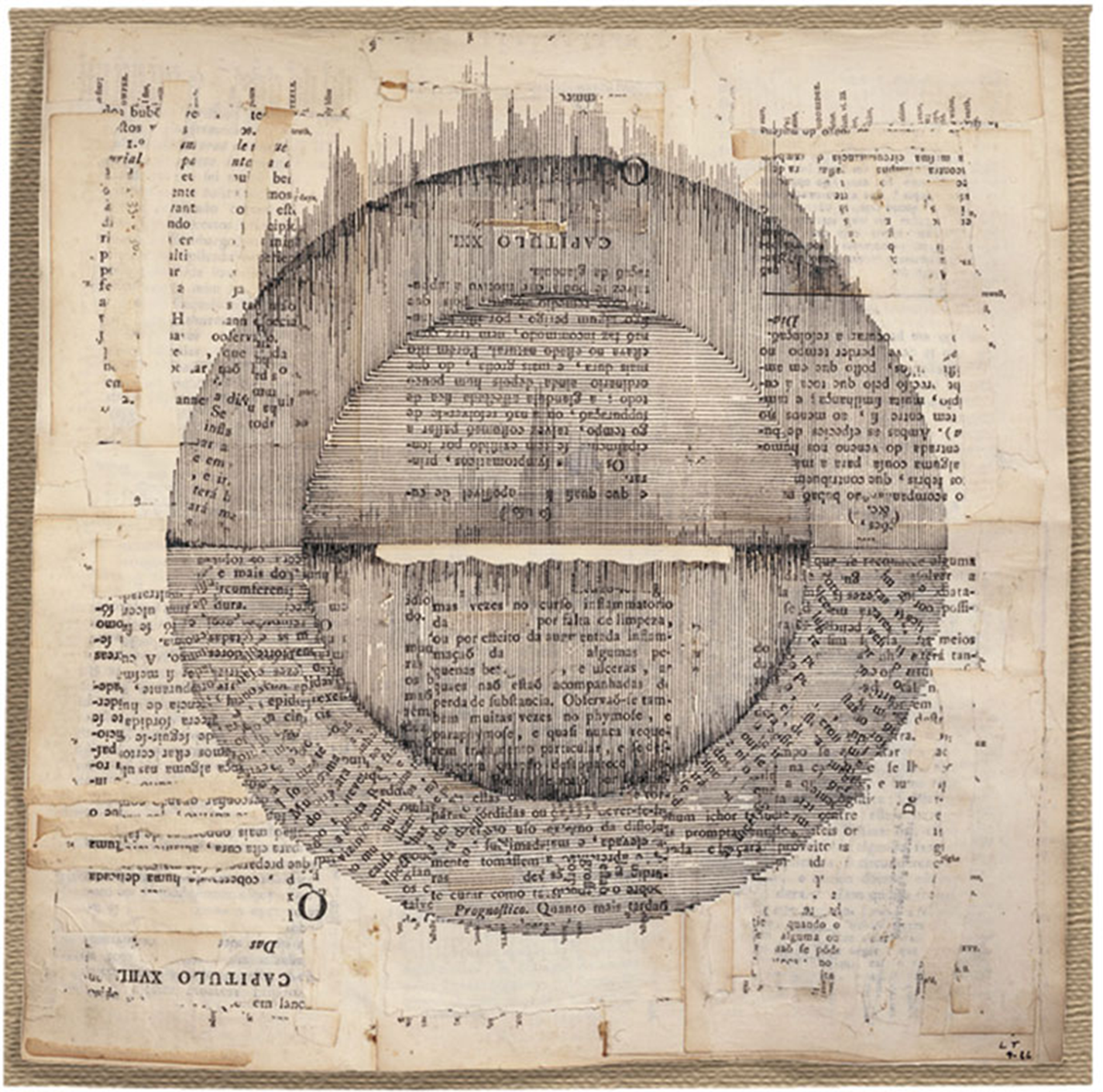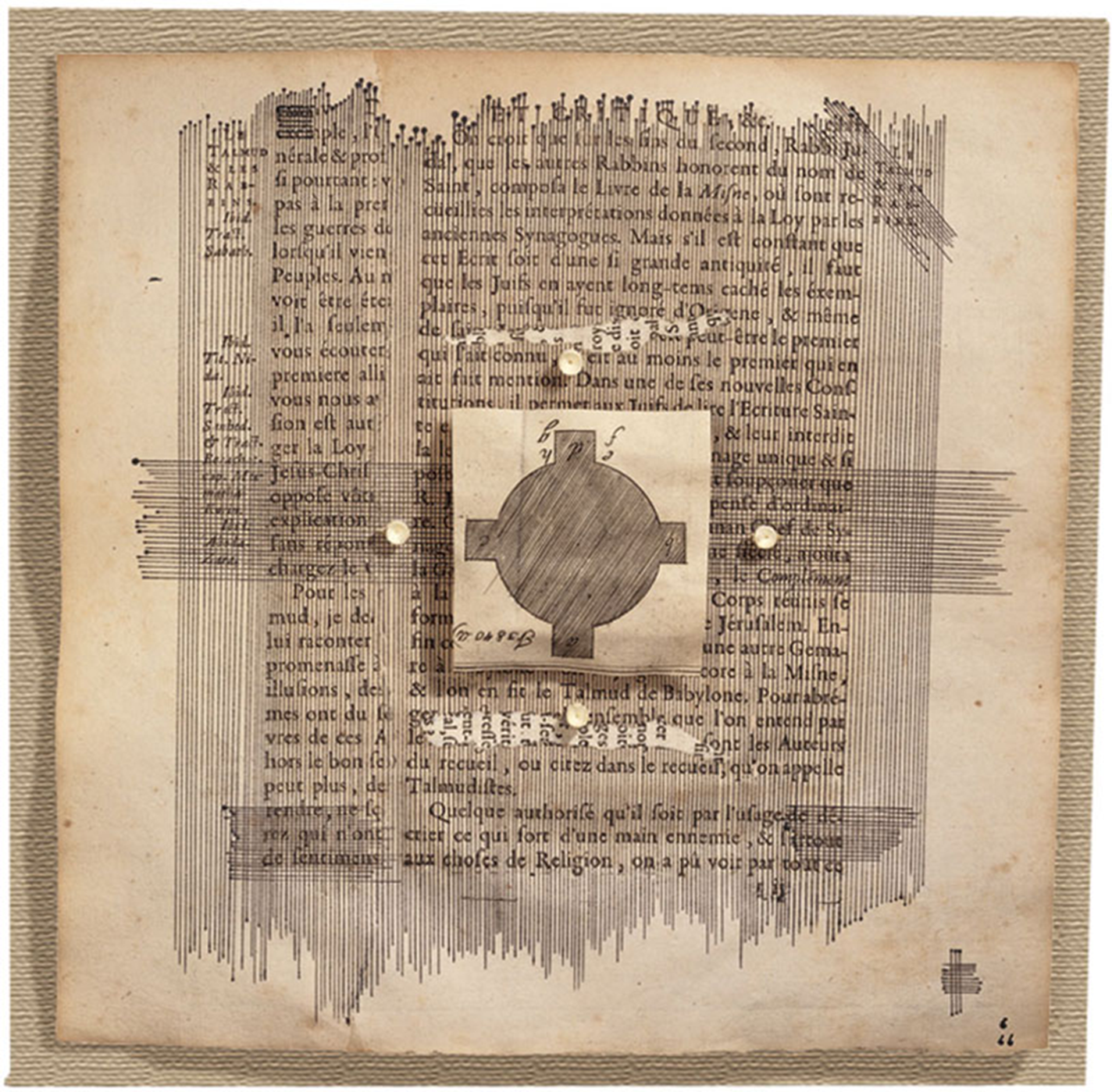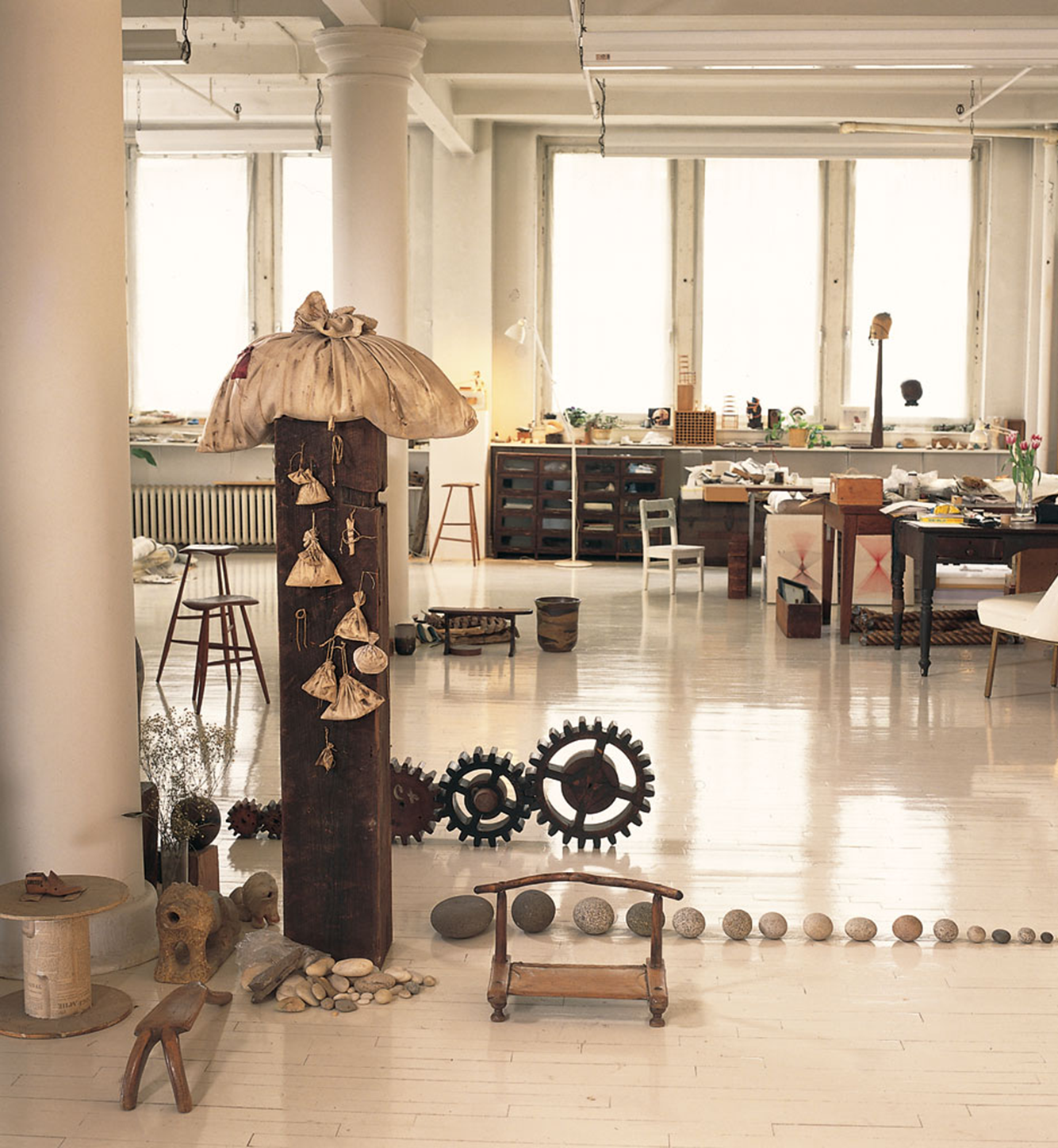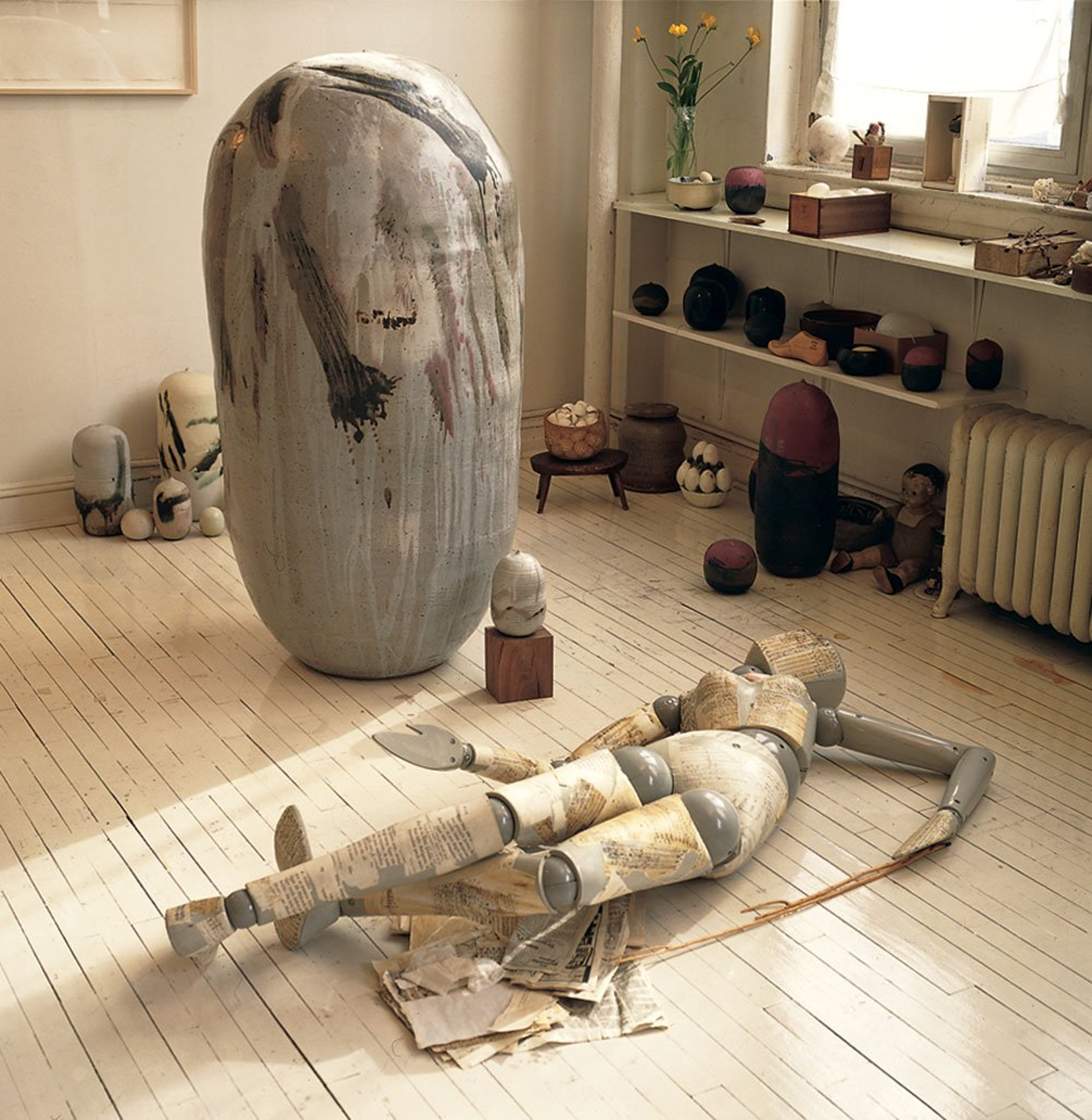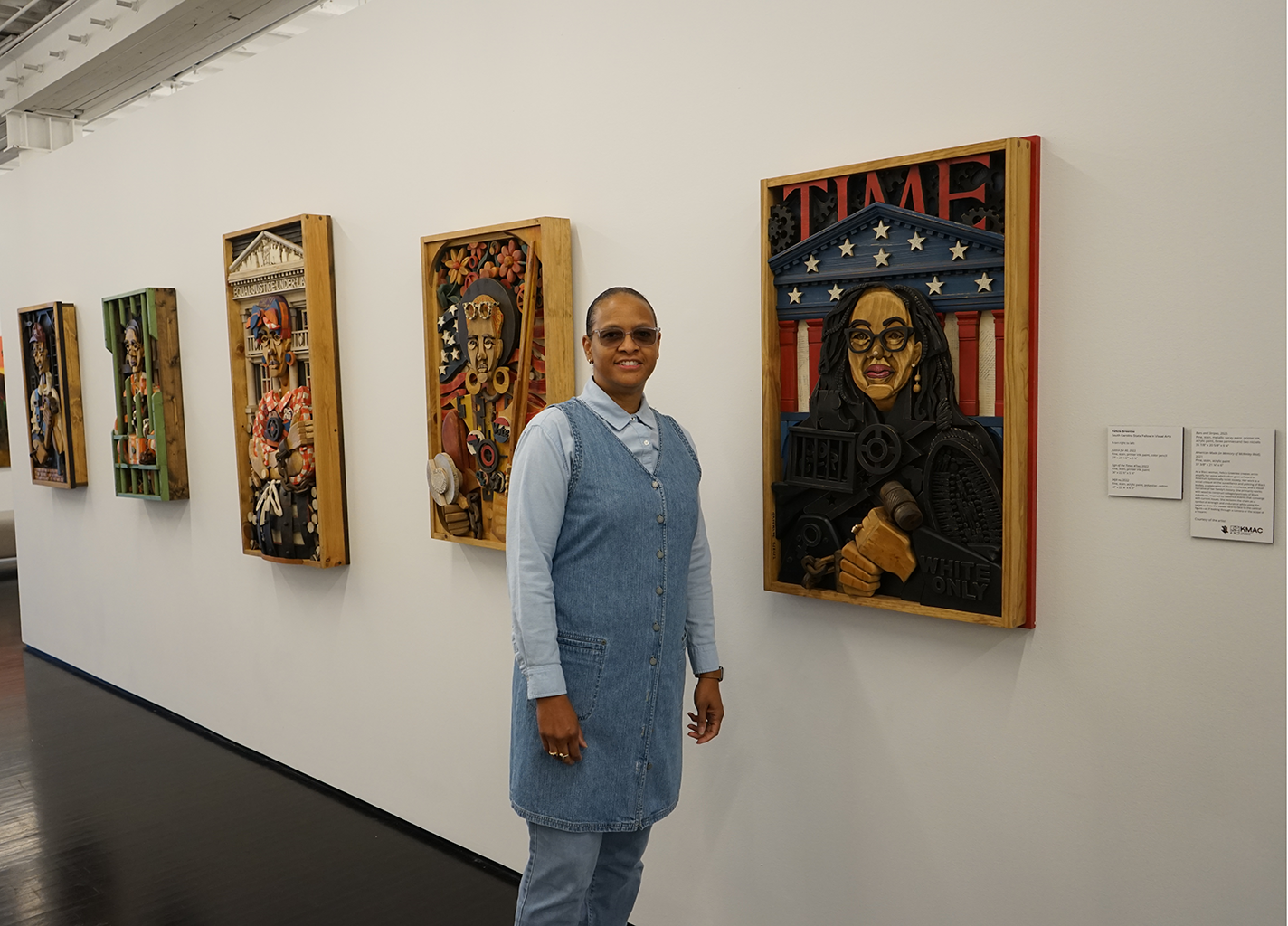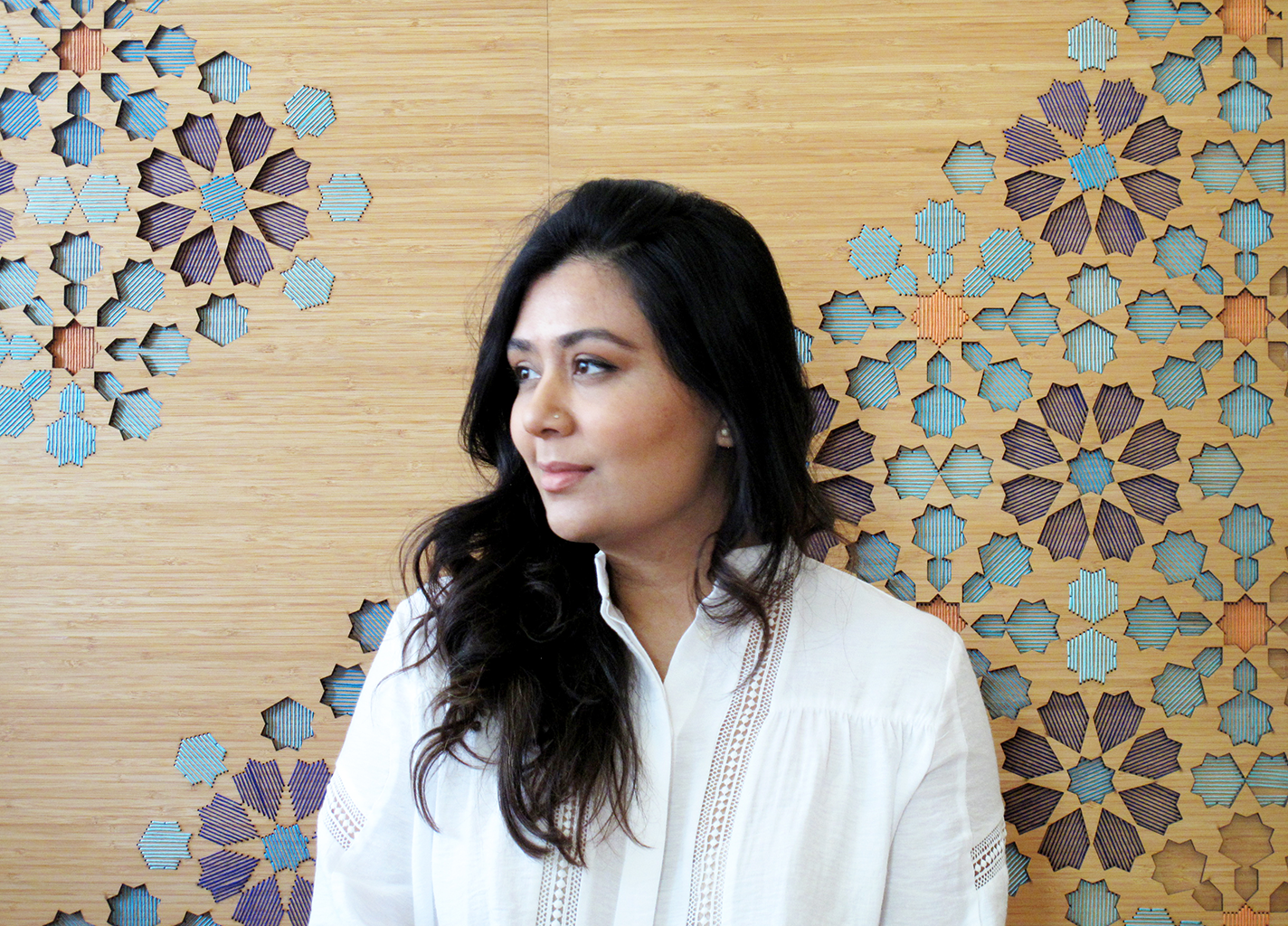Lenore Tawney’s life spanned a century of change: turbulence, wars, upheavals and unimaginable technological advances. She herself was a catalyst for an artistic revolution. Yet her presence was serene and spiritual as she fearlessly pursued a vision that emanated from a deep inner devotion to living and working wholly. Her vitality was grounded in an openness to new ideas and new people-the embrace of the human condition as a journey. A passage from a favorite book marked in her hand reads: “The spiritual path, the path of purification, of emancipation, of liberation, is a path where we change our inner nature.” Purification, emancipation, liberation: these were the tenets not only of Tawney’s life but of her artistic achievement, which continues to echo across the generations.
Born in Lorain, Ohio, in 1907, Lenore Agnes Gallagher moved to Chicago in her 20s to work as a proofreader while attending evening classes at the School of the Art Institute of Chicago. Her marriage to George Tawney, in 1941, left her a widow less than two years later. Between 1943 and 1945, at the Institute of Design, she was the student of such avant-garde artists as László Moholy-Nagy, Alexander Archipenko, Emerson Woelffer and Marli Ehrman. Martta Taipale, a renowned Finnish weaver, also influenced her profoundly. In 1957, after travels overseas, she moved to New York, where she followed an artistic path that would challenge preconceived conventions.
Although the 1950s craft revival aided Tawney’s fledgling career as a weaver, her daring constructions, the outcome of a singular vision, proved that art and craft need not be separate. Even her early works broke with tradition. In Bound Man, 1957, the tension between the downward pull of an abstracted figure on a sheer fragile background is palpable. The shimmering impressionistic surface of Jupiter, 1959, glows with saturated, yet subtle colors. From the beginning Tawney emphasized the individuality of each thread, either singly as a visible entity or grouped together thrust boldly through the confines of the selvedge. It was a first step in ignoring the restrictions of rectangularity prescribed by the loom. She manipulated her weavings into sculptural forms such as The King I and The Queen, 1962, a revolutionary concept at the time. All along her works were studies in contrasts: some as open and diaphanous as spider webs (Lekythos, 1962), others as dense and solid as walls (the Shield series, begun in 1966 and completed in the late 1980s). The simple act of rotating her weavings yielded unexpected visual newness as fringes, braids, shells or beads cascaded sideways. Like other artists, she explored the motif of circle in the square and proved that abstraction, rather than being the sole domain of sculpture and painting, had an equally powerful ally in the medium of fiber, rendering it less static. In Red Sea, 1974, In Fields of Light, 1975 and Waters Above the Firmament, 1976, among others, she permitted light to penetrate between meticulously woven slits. The partial addition of manuscript paper added a quality of utter timelessness. The circle in the square remained an important aspect of her work as she continued to use it in line drawings, collages and assemblages such as Round and Square, 1966, or The Matrix, 1970.
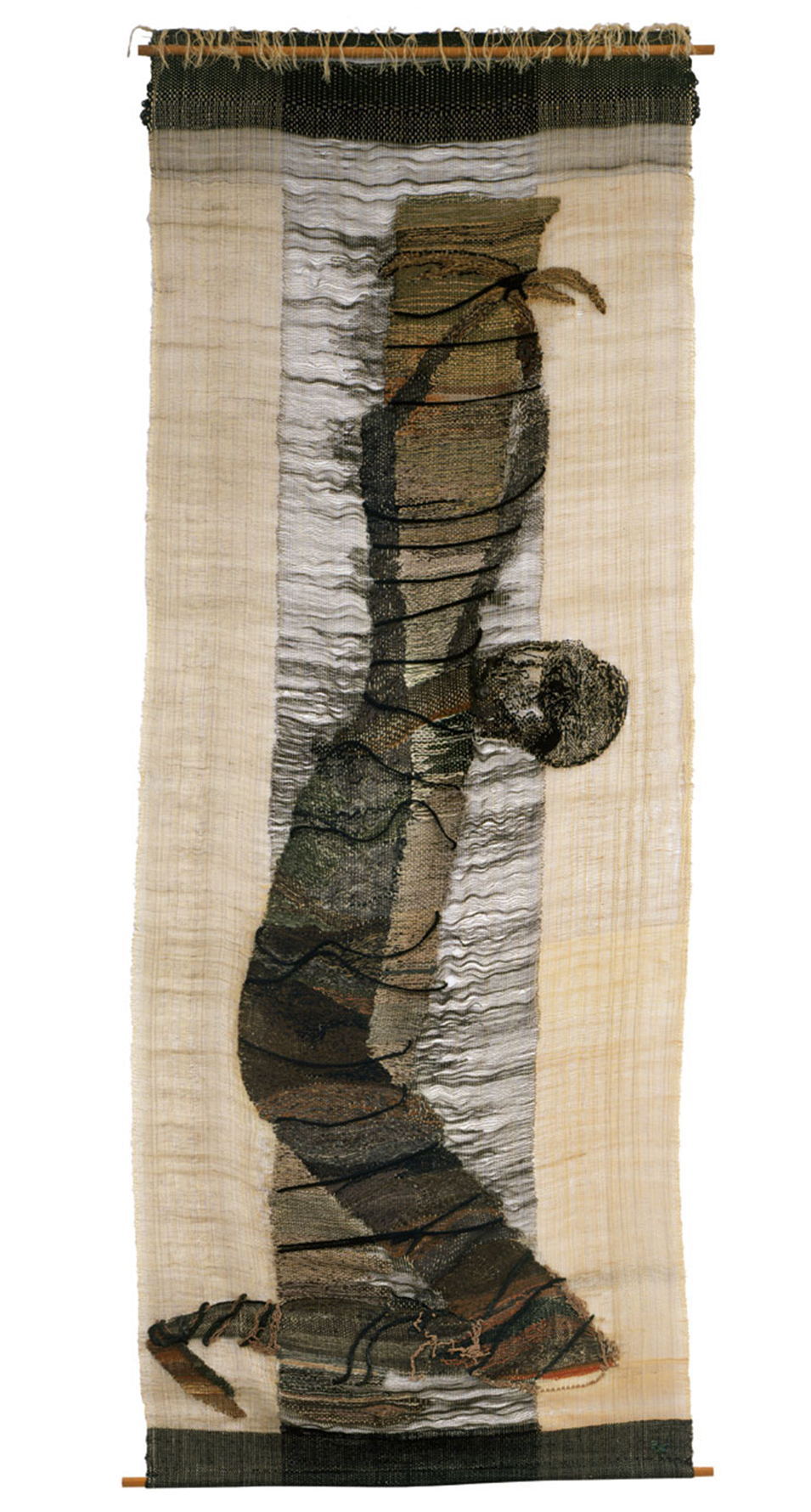
Lenore Tawney, Bound Man, 1957.

